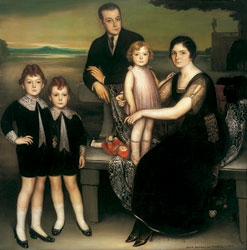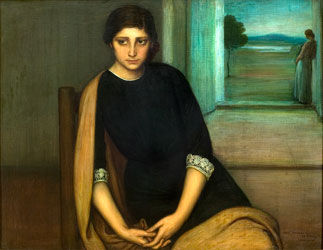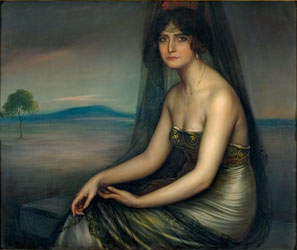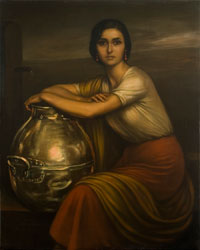- 01. Luminism and Social Realism
- 02. Portraits and Symbols
- 03. Poems and Allegories
- 04. Eroticism and Sensuality
Julio Romero de Torres.
Between Myth and Tradition
27 April - 8 September 2013
Portraits and Symbols
Julio Romero de Torres is directly linked to the image of woman, the theme that earned him his great fame. Prominent among the portraits he painted throughout his career are those of women, and it is through the interpretation of woman in his work that his stylistic development can be traced.
The painter immortalised female figures from different sociocultural environments, both elegant bourgeois women and traditional working-class women. They all wished to be part of his repertoire and through his models he established the characteristics of a defined style, making them symbols of womanhood. The figures are visibly imbued with melancholy while conveying unease, and their elegance is underlined by his concern with female fashions of the day. Altogether they display the salient characteristics of his oeuvre, chiefly technical precision and soft highlights on the drapery and flesh; these features contrast with the strangeness of the settings or background landscapes through which he turns reality into allegory.
Another type of painting he cultivated, albeit to a lesser extent, was family portraits. They enjoyed great success owing to the social prestige of having one’s picture painted by him and owning one of his works. They are all based on a composition devised as a stage where the figures are set against a landscape background with a few urban references, lending the paintings a somewhat theatrical appearance.




